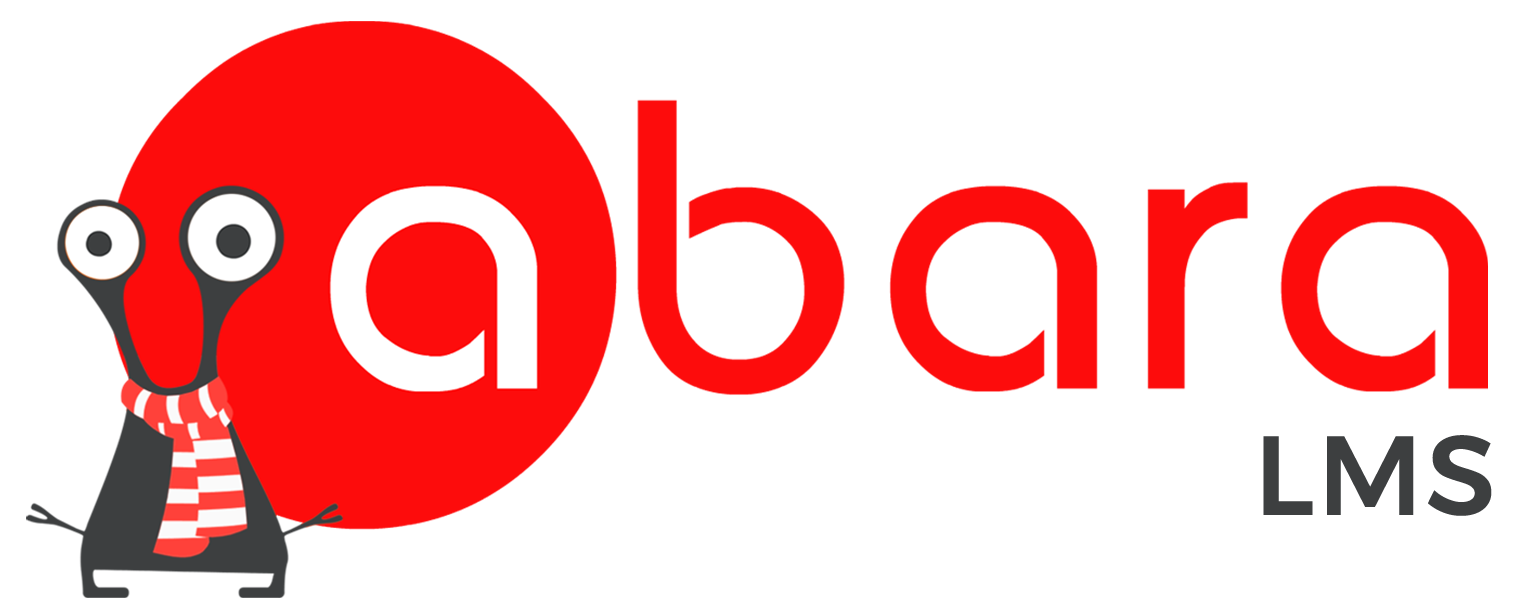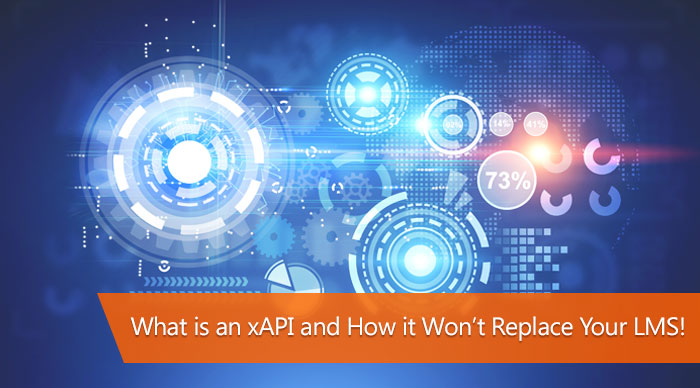On this Page
What is an xAPI?
xAPI is an advanced learning technology which is a part of a corporate learning management system. It is a standard that tracks, measures, and analyses a learner’s behaviour pattern when interacting with learning objects on the LMS and beyond it. This way, learning officers are better equipped with data on specific learner’s learning habits and stand a better chance at fine-tuning and improving the learning activity.
For the last five years or so, industry experts have argued over the impending end of the LMS. Many argued about the xAPI and its Learning Record Store (LRS) functionality as the eventual successors. While others started branding their learning platforms as Gamification LMS, Microlearning LMS, or Social Learning LMS. Some said other forms of external learning tools would take over. While others chose to take a whole new tangent in itself. As a marketer, you may be able to see through all of the buzzwords. You will realize that a lot of this is good old ‘finding a niche and trying to position themselves differently in a crowded LMS marketplace’. The truth, however, is in understanding — what is an xAPI and how it won’t replace your LMS!
People are trying to forcefully kill the concept of an LMS
One of the leading reasons why people are forcefully killing the trusty LMS is because these people are fed up with their systems. The reason for this frustration is:
- A poor user interface which is out of tune with a modern UI and UX focused world
- Legacy LMS platforms meant more for a behind-the-firewall kind of era
- Older LMSs that have continued to be upgraded and patched upon, but are out of tune with a mobile-first world
- Older legacy LMS platforms trying to do too many things and ended up being cluttered and bloatware applications rather than being a meaningful learning software
- Price gouging and irrationally expensive LMSes and poorly negotiated long-term contracts reminiscent of old-style Enterprise Software deals and not true SaaS pricing
- The lack of free upgrades to LMS platforms that have been around for a long time (vendor insisting on paid upgrades) and need them desperately. Having to put up with the old legacy systems frustrates users (there are still some AICC only systems out there!)
The list goes on. The solution is to switch from your existing provider and seek out a modern LMS whose features are in line with today’s trends and today’s commercial possibilities around the SaaS model and the cloud.
The lifecycle of a SaaS product
The LMS is a software—SaaS—product, and all software have a product life cycle. There is also an industry life cycle. The first graph is a product lifecycle and the second graph is an industry life cycle.
Multiple products may come and go during an industry life cycle. Products may mature, and products that don’t keep up, die out as they must. New entrants coming in and challenging the old, taking away the market share is no surprise.
The automotive industry is an example of an innovative Industry. The automotive industry is not spared either. New products like Tesla enter and shake things up as well. Tesla is still a car, but more than anything it is a modern car, unlike any other on the road.


Just like that, the LMS is alive and well. What most people consider it as reaching its life’s end, is actually just the opposite. The LMS is actually reinventing itself. Newer vendors are making more capable and evolved systems.
People’s use of the LMS is limited
The reason behind compliance, certification, and scheduling classroom training being the only major use for an LMS is because – training budgets have been slashed over the years and compliance, onboarding, and scheduling classroom training are the only activities L&D as a body pursue. This has nothing to do with an LMS’s capabilities, it’s simply a shortage of training budgets. The other reason is learning leaders, L&D officers, and HRs just do not want to take the extra efforts of doing something different with the LMS.
It is true that learning leaders simply aren’t looking at more innovative ways to use the LMS or switch platforms. For most, it will always remain a compliance, certification, and ILT scheduling tool.
There is a real problem here. While LMS systems are continuously working towards addressing greater use cases, cynics just cannot see beyond their pre-defined notions of what an LMS’s use should be. Or rather, they aren’t seeing it on purpose! Some might even argue that learning leaders know very well about the LMS’s ability to be used as a Knowledge Reinforcement Tool (KRT), Sales Enablement Platform (SEP), or an application to share and store knowledge. But it is just too much work and learning involved for them to actively make these applications a reality within their own organizations.
Why you shouldn’t confuse the xAPI with an LMS
Coming back to technologies such as xAPI and the LRS—the so-called successors.
What most people do not realize is that the xAPI and the LRS is nothing more than a record storing application. i.e. it stores everything you do, it records your patterns and it gives you analytics on learner behavior.
But how is it going to help you do something specific? Does It provide you with centralized access to learning content? Is it going to help you schedule classroom training? Will it help you keep track of certification and attendance? Is it going to provide you with information on the go? Cynics would then argue, “we will build a complete system around it, which would do just that” and the rest would simply ask, “doesn’t that just mean you are building an LMS around the xAPI?” The truth is – the xAPI cannot replace the LMS; rather, it becomes a part of it.
The xAPI is definitely a utopian concept
There is no denying how advanced this technology is, its benefits, and the advantages of using it. But all this is good only as long as your organization really needs in-depth analytics into your learner’s behavior patterns.
xAPI tracks what people click on, what they view, what content they share, the time they spend on something and so-on.
The marketing industry especially Business to Consumer (B2C) deals with this kind of data and sifts through this sort of data to learn methods of grabbing their customer’s attention. Sure a training department could do with this data as well.
The budget for xAPI exists, but does the time and knowledge to implement it?
There are plenty of evolved L&D departments that have the resources and funds to invest in xAPI. But the truth remains that many are not equipped or well-funded enough to do anything meaningful with that data. Even if your organization really does need advanced insights and analytics into your learner’s behaviour, there is still no point of having an xAPI without a formalized method of arranging training courses, checking on completion rates, scheduling ILT classes and so on. You definitely need an LMS to maintain the discipline a learning environment should have. You may simply need a modern LMS that has xAPI handling capabilities with good analytics. Adding a separate LRS and bolting it to your LMS and causing integration issues is hardly going to solve the problem you had in the first place.
Experienced industry members know that the xAPI was introduced as a standard to succeed SCORM. It was also an opportunity to introduce the LRS in order to create commercial success. xAPI is a good standard and it will eventually deserve appreciation.
But let’s not confuse good commercial acumen and the marketing dollars that push the standard with large-scale adoption. Many LMS companies are struggling with xAPI not taking off. There are more LRS systems and LMS with LRS integrations out there than there is solid demand for xAPI standards. It is still early days for xAPI and it may still evolve to become the standard that AICC was briefly and SCORM has been for so many years.
People are still mixing the xAPI’s uses with those of an LMS!
Most organizations and learning leaders who believe the LMS is not relevant anymore are mixing two different things. The first being, they are unaware of the new LMS systems in the market, and still imagine the LMS to be an age-old legacy system at the mention of one. Or, they really still do not know what the new xAPI and the LRS is and how it works.
The LRS with or without analytics is not a replacement for the LMS. And the gamification LMS, or microlearning LMS, or social learning LMS are niche applications of an LMS. It may meet specific needs.
The second scenario resembles a situation where people catch on to a trend just because it is the new talk of the town. They really must take the time to understand what this talk is.
Conclusion
Anybody who thinks the LMS is dead, should first take the time to test the new systems out. Understand what the xAPI and LRSes can and cannot do. Also, understand that the xAPI is more of an add-on to the modern LMS than its successor.
Many salespeople hate their CRM and are looking for a magic pill to replace the pain. They lack the discipline to put it to good use. You can brand the new system pipeline management, marketing automation, etc. But, you still will have to enter your contacts, manage them, manage deals and wrestle with the CRM.
If you have any queries on how modern LMSes really function, do reach out to us at contact@abaralms.com. We will be more than happy to help you map our product to your existing needs. Abara LMS is a recognized learning management system and we are proud of it. Click here m to initiate a free trial and check it out for yourself! We also develop custom eLearning courses, click here m if you’re interested to know more!


